Training for a problem with the neck involves:
- finding and practicing neutral posture
- engaging muscles which stabilize the neck
- gaining strength in the neck muscles
- and activating a complex reflex coupling eye movement, neck movement and balance
The following describes a stepwise progression of how to achieve these goals starting with the acute neck.
Om du har besvär med nacken, ska du vara noggrann att hålla huvudet över axlar i vardagen samt under träning. Du ska inte tippa huvudet fram när du tittar på olika skärmar eller under andra aktiviteter. Med akuta näck besvär, ska huvudet vila i golvet både i mag och rygg liggande, dvs huvudet ska inte balanseras över golvet. Detta betyder att du inte ska göra planka, sit-ups, sido-plankan eller liknande övningar. Om du tränar i stående ska armarna vara böjda, att stå med armarna utsträckt belastar nacken. Du ska undvika att pressa vikterna uppåt, särskilt över huvudet. Ergonomi på jobbet och hemma påverkar nacken, därför ska du variera dina positioner, men ska se till att nacken är över axlar och är i en neutral position. Teck Neck är ett uttryck som beskriver en som sitter mycket framför en skärm och får besvär i nacken på grund av dålig hållning. Länken ger dig tips för hur man ska motverkar besvär för nacken och ögonen när man är fram för skärmen mer än 2 timmar per dag. Råd och bilder om ergonomi finns under länken: Ergonomi
Grundposition stående (neutral)
Stå med rak rygg och nacke som om du lyftas mot taket med bakhuvudet (sträck på ryggraden). Hakan ska vara något inåt och riktar sig mot golvet med en lätt spänning (som om någon ska ta dig runt nacken och du försvarar dig). Aktivera den nedersta och djupaste delen av magmuskulaturen genom att pressa in naveln mot ryggen med utandning. Gör ljudet ”SSSSSSSSSSSSSS” med munnen så det hörs för att hitta spänningen. Ibland är det lättare om knäna är lätt böjda. Du kan även aktivera bäckenbotten muskulaturen. Du drar upp bäckenbotten, det är en känsla av att hålla tätt när du är kissnödig.
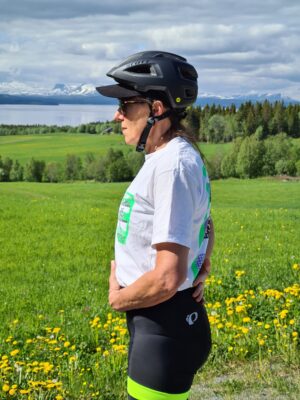 neutral bäcken position 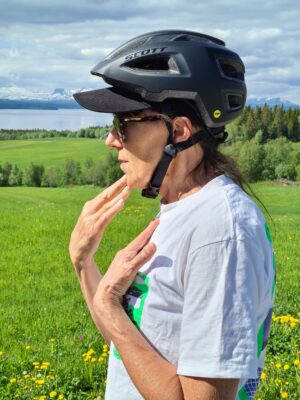 in med hakan Svank |
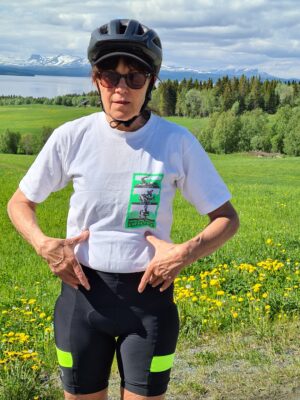 spänn magen mot ryggen 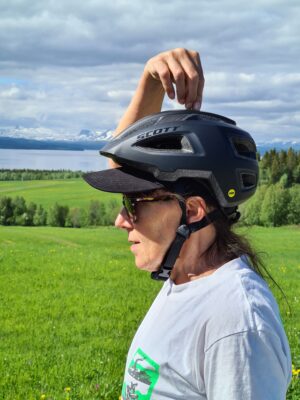 sträck på dig, bakhuvudet mot himlen |
Behåll aktiveringen av magmuskulaturen; pressa skulder partiet neråt, det känns som du får tag i muskler som omringar bröstkorgen. Du känner då hur bröstbenet rör sig uppåt. (Det ska inte göra ont eller drar i nacken). Du ska också skapa en lätt spänning mellan nedre bröstkorgen på framsida och bäckenet fram som om de ska närma sig varandra. När de drar ihop sig, så minskar svanken men ryggen blir inte platt. Detta är en känsla av att de möts. Nu har du aktiverat hela bålen med mage, rygg samt axel/bröstkorg. Det känns nu lätt att sträcka på dig som om någon drar upp dig mot taket från bakhuvudet.
Detta är neutral hållning och man tränar det under dagen i olika situationer genom att aktivera musklerna. Det ska inte göra ont. Det är inte en kraftig spänning, endast en lätt aktivering av muskulaturen. Detta är utgångsläget i det muskulära stabiliseringssystemet. När du sen tränar andra övningar kommer du öka aktivering av dessa muskler.
I stående position kan du vrida huvudet sakta till hö och sedan till vä. Använd gärna blicken (se övningar nedan). Rörelsen ska inte framkalla smärta. Du kan luta huvudet mot axeln samtidigt som du sträcker på ryggraden. Håll axlar neråt samtidigt. Upprepa gärna några gånger om det känns bra. Rör axlarna runt i en cirkel, gärna bakåt, känns att du jobbar med hela skulder partiet.
Nickning: Start position Ligg på rygg med böjda knä och sträck på ryggraden. Nicka med huvudet att räta ut nacken, hakan dras in mot bröstet. Se bilden längre ner med titel nickning (i snön).
Nickning med flexion: behåll start position, använd gärna en gummi träningsband runt bakhuvudet. Håll hakan ner vid bröstet och med hjälp av bandet eller finger toppar, lyft huvudet från golvet och sakta tillbaka. Målet med gummibandet är att hjälpa bara så mycket som behövs. Vart efter du blir starkare, kommer du att behöva mindre hjälp. Se bilden längre ner.
Nickning pressa båkat: Behåll nickning och pressa huvudet lätt mot golvet och hålla kvar i 5 sekunder. Du ska känna att du påverkar nackmuskler där de fäster vid skallen men du ska inte provocerar smärta eller andra obehagliga symptom. Upprepa 3-5 gånger.
Nickning med vridning:
Nicka med huvudet att räta ut nacken och dra in hakan först, sedan kan du vrida 15-20 grader åt höger och pressa huvudet bakåt i 15-30 sek. Du ska behålla nickning med nacken och hakan sedan vrida lite till och pressa bakåt. Gör det i intervaller tills huvudet är vriden maximalt om inte detta provocerar symptomen. Fortsätt på andra sidan. Upprepa 3-5 gånger.
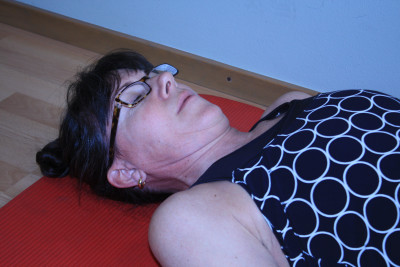
nickning pressa bakåt med huvudet
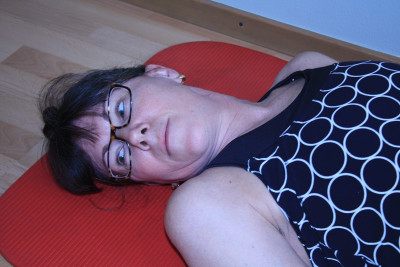
nickning med vridning
Nickning i sidliggande: Ligg på sidan med armen utsträckt över huvudet. Lift huvudet och örat en aning från axeln samtidigt som du dra in hakan och sträcka dig. Håll huvudet i denna position medans du lyfter det övre benet 5 ggr. Repetera 3 ggr.
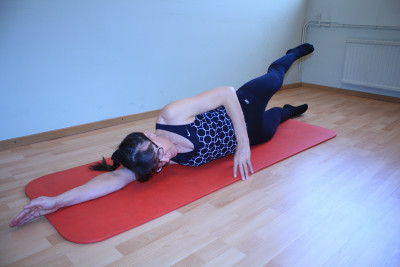
sidliggande, nickning
Another important aspect of regaining stability of the neck is to train the deep neck flexors, muscles that pull the chin to the chest. This needs to be trained gradually with neck pain and/or trauma. The exercise above with “nickning” activates these muscles, but to strengthen them you start by almost lifting the head from the floor without losing the tucked chin position. Use your fingers to feel how these muscles engage when you start to lift the head.
The winter pictures below show exercises to strengthen the neck. Some are described above. The goal is to lengthen the spine and bring the chin towards the chest with out bending the head forward. This is the start position for all the exercises. Start by lying on your back in start position, use fingers to support head and lift head slowly with control (nickning med flexion). While on your back, do the “nickning pressa bakåt” and “nickning med rotation” as described in the text above. Lie on your side, in start position, lift ear from shoulder (nickning i siddliggande), hold in this position for 10 seconds. The next exercise is in sidelying start position. Lengthen spine and lift the head bending it upwards, return head to shoulder (nickning med sidolyft huvudet). Perform this exercise on both sides. Turn to the stomach, lengthen entire spine, chin pulled in but neck straight. Squeeze shoulders to feet (as in Bröstrygg stabilitet “W”), lift nose from surface. How many exercises depends on the condition of your neck. Discuss this with us, but generally they should not make symptoms worse. Start with a few repetitions and work your way up to 10 reps and 3 sets.
Exercises to train neck strength: Holding the head in this tucked position, lift head slightly from the floor:
A. Roll forward and back while maintaining a chin tuck. (See video below)
B. Roll side to side (knees in 90 degree position) while holding the head in this tucked position. This should not cause pain. (See video below)
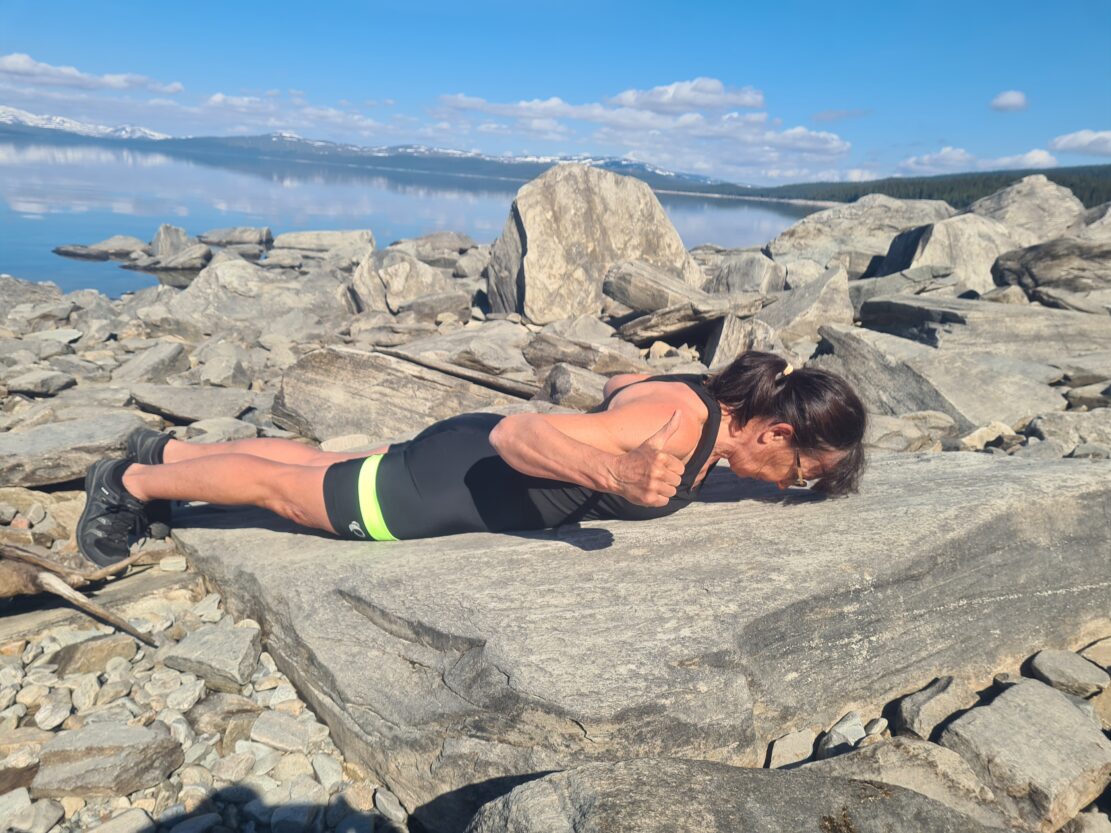
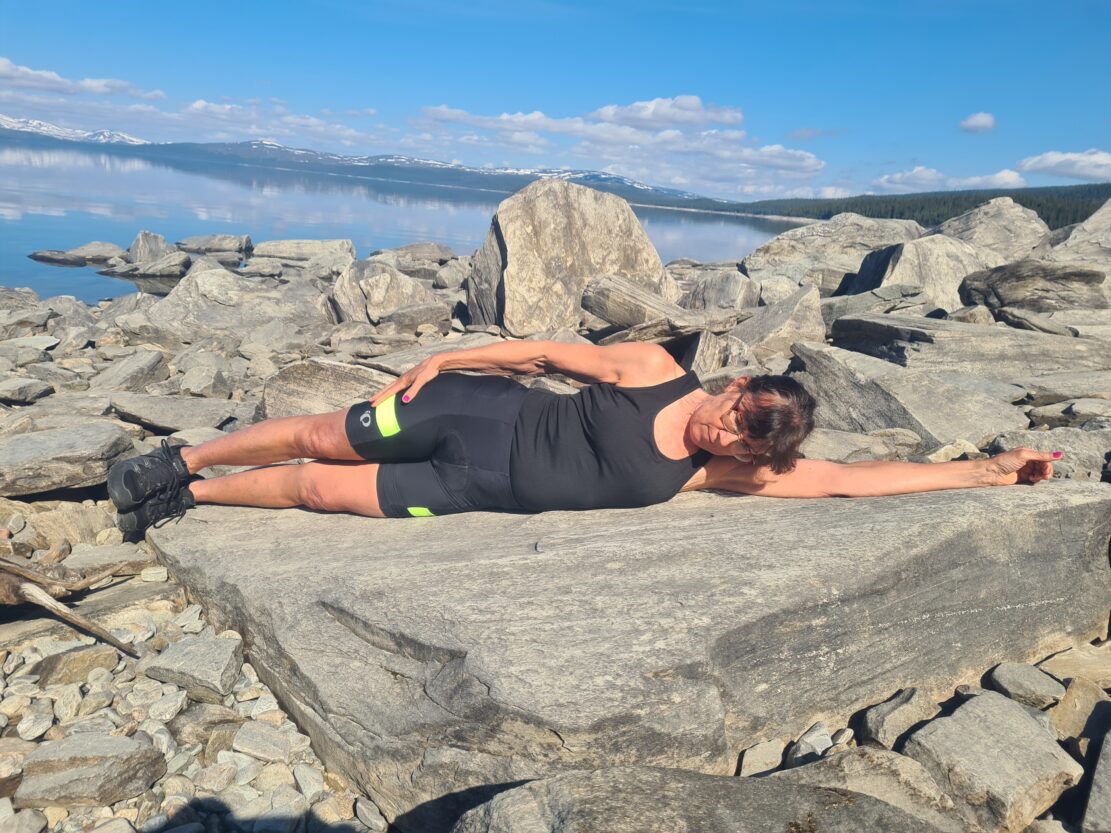

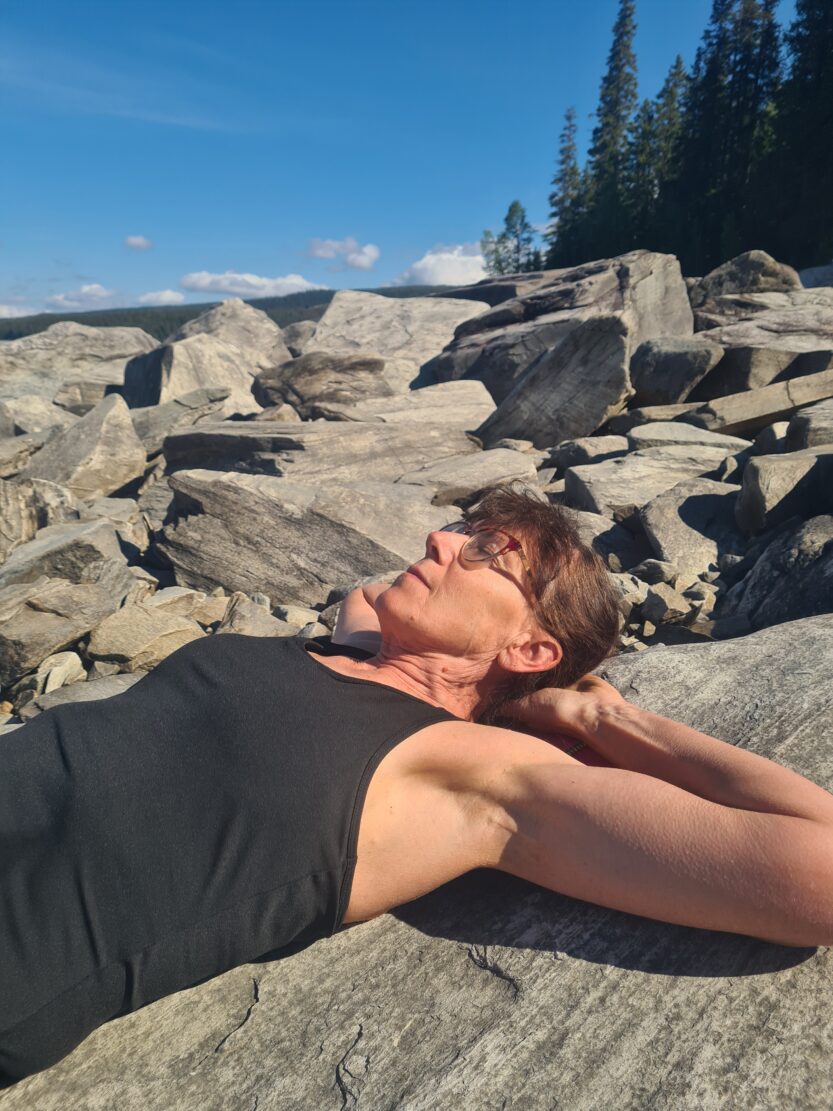


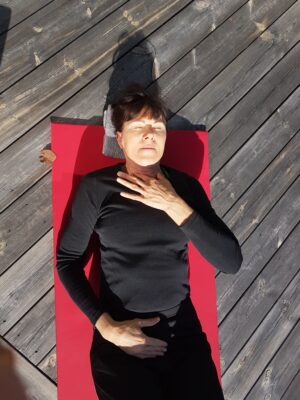
Oculomotor Rehabilitation Exercises for the Neck
An injury to the neck or head can disturb reflexes which coordinate simultaneous neck and eye movements and balance. One reason some people have trouble regaining normal pain-free movements after trauma to the neck or head is that these important reflexes are not functioning properly. These reflexes play a role in how a problem with the upper neck can disturb balance. The following exercises are geared to activate these reflexes. In a more acute stage, these exercises are best done lying on the floor so the weight of the head and arms do not strain the neck.
Oculomotor Exercises:
Cervico-Ocular Training (Smooth pursuit)
The point of this exercise is to focus and maintain your gaze on your thumb while you turn your head in a smooth continuous movement.
Lie with arms stretched out in front of you
Focus your gaze on the right thumb nail and maintain throughout the exercise
Slowly and continuously move the right thumb in an arc out to the side
Pause and then return to start position, maintaining focus through the entire arc of motion and back to start position
Repeat 5 times on each side
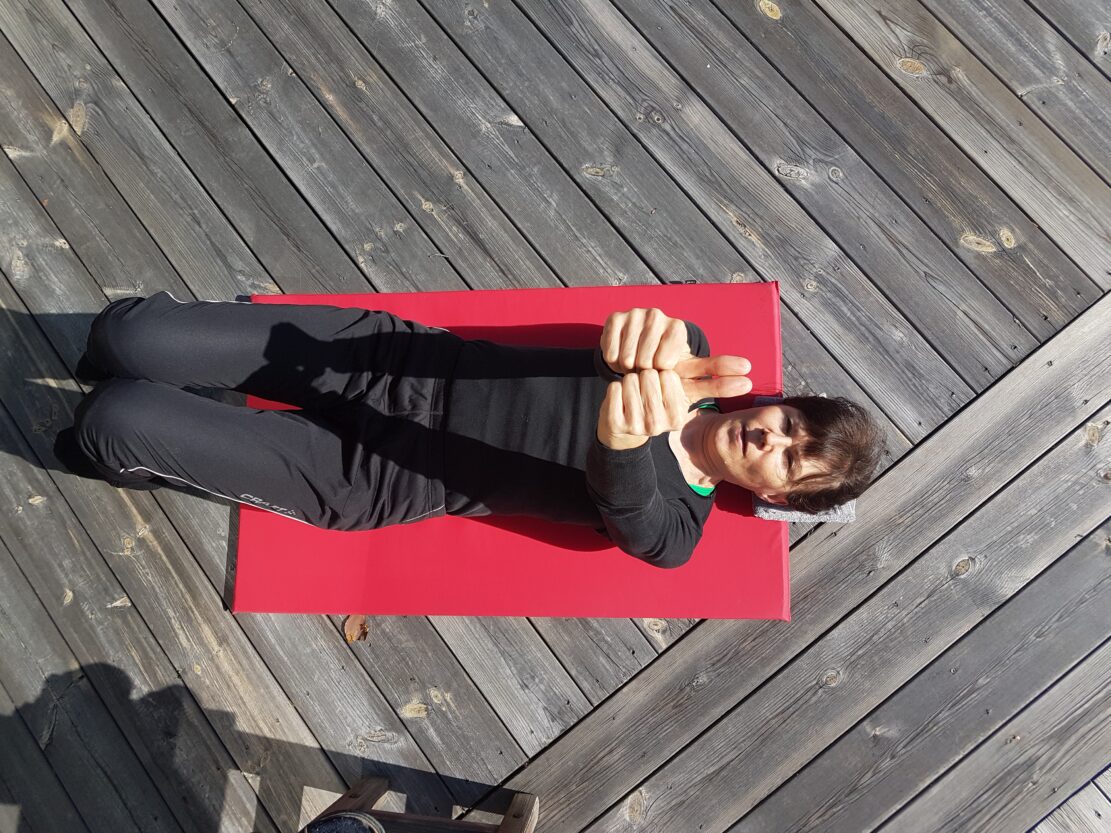

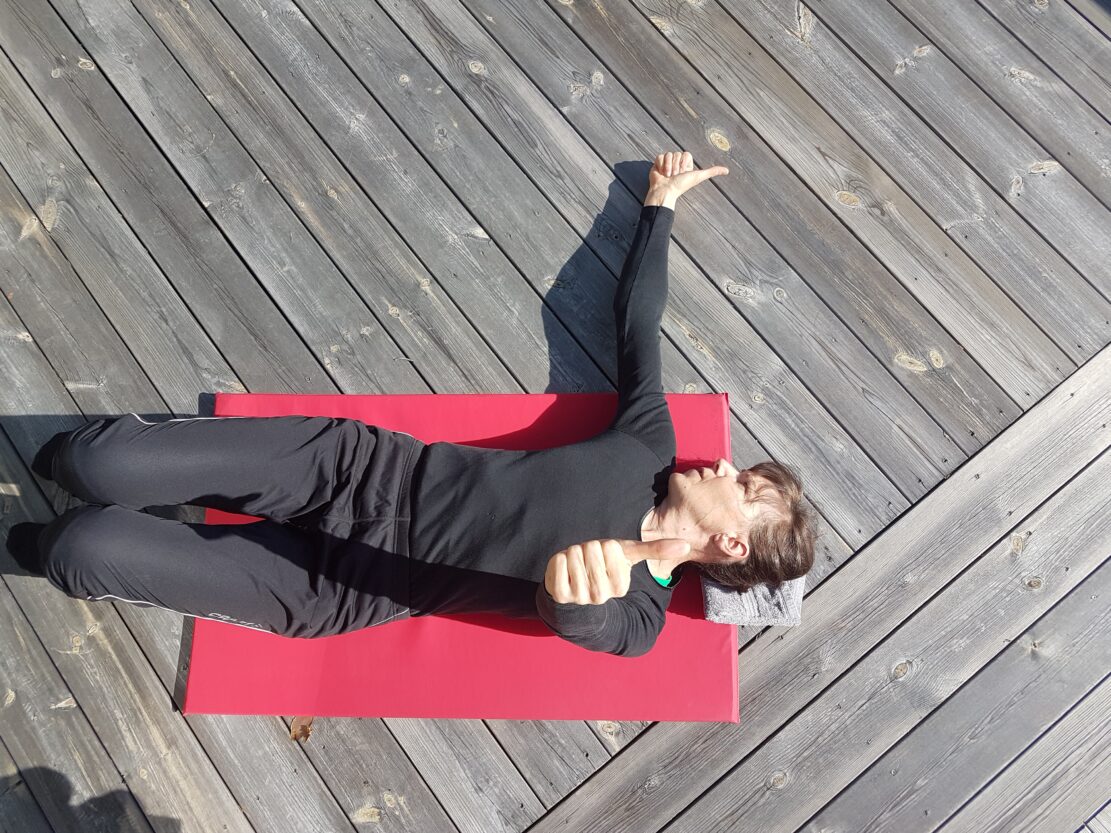
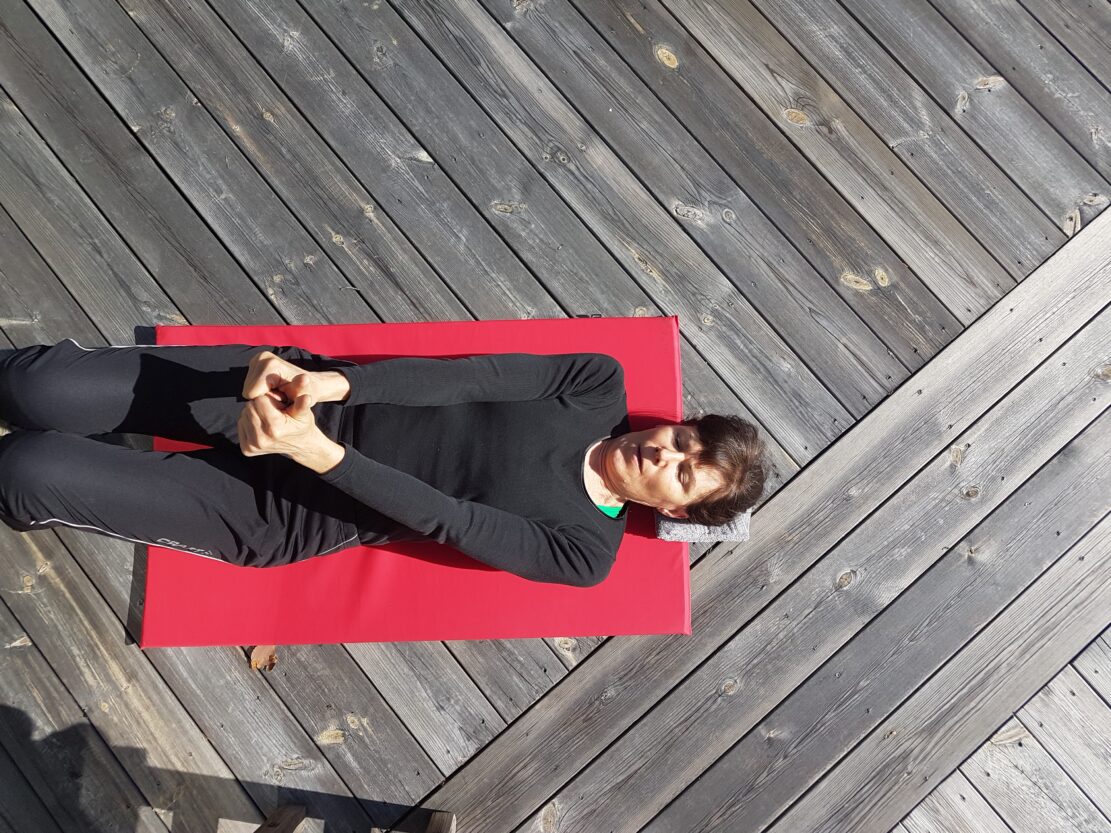
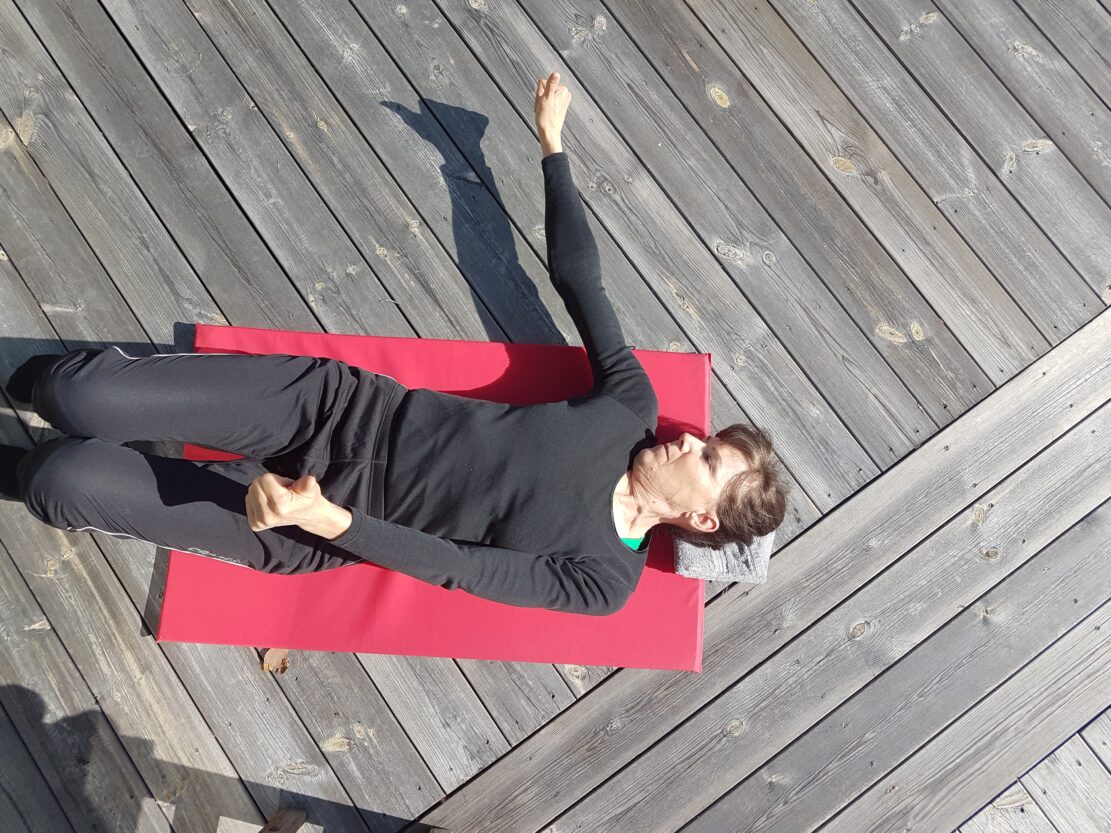
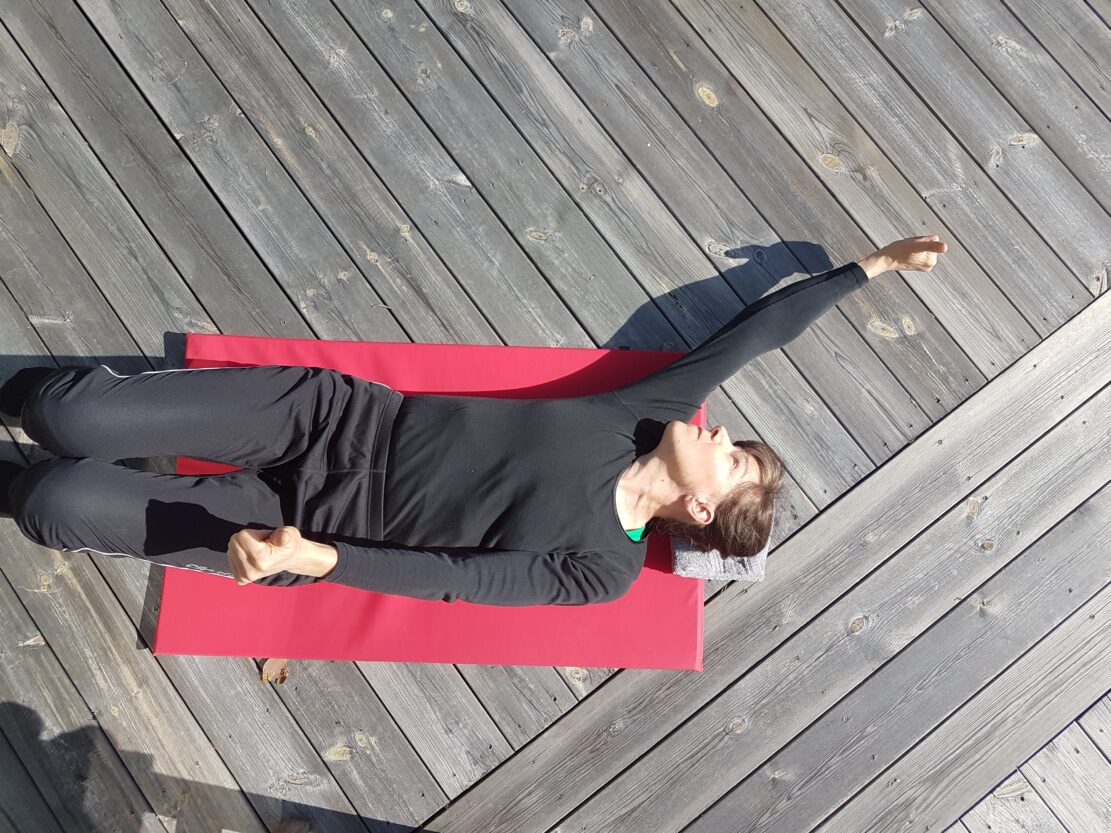

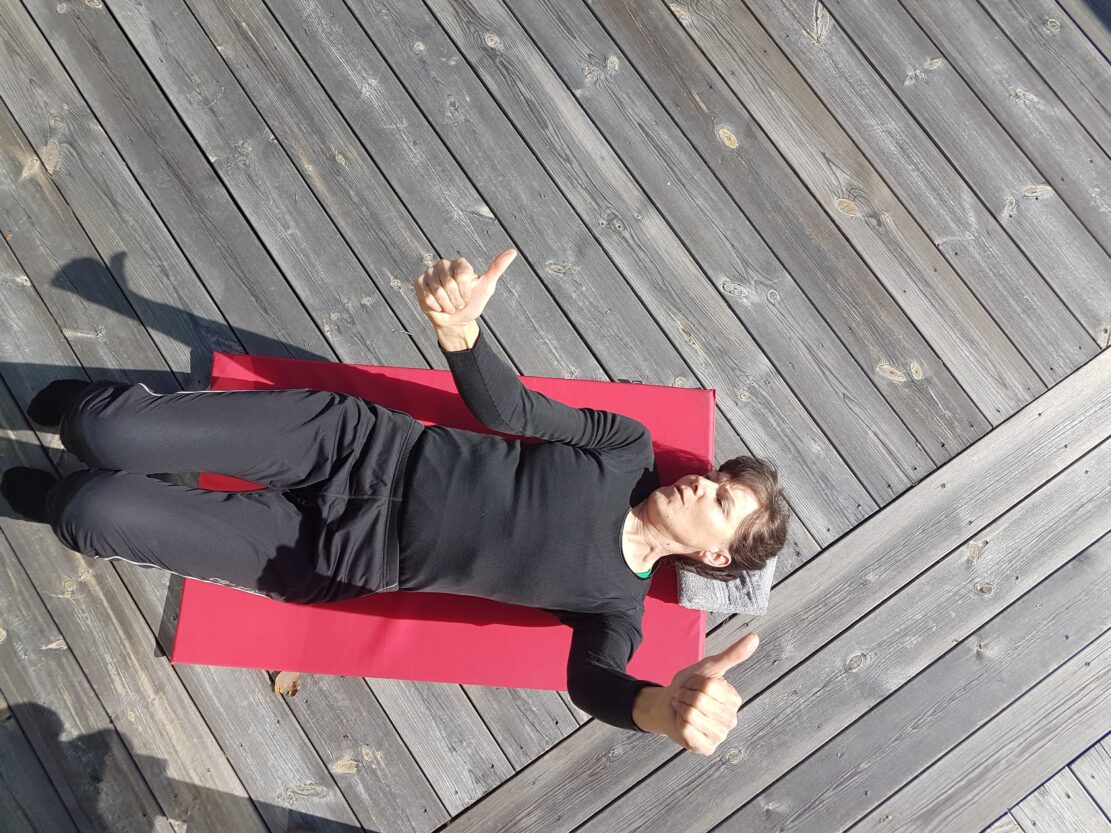
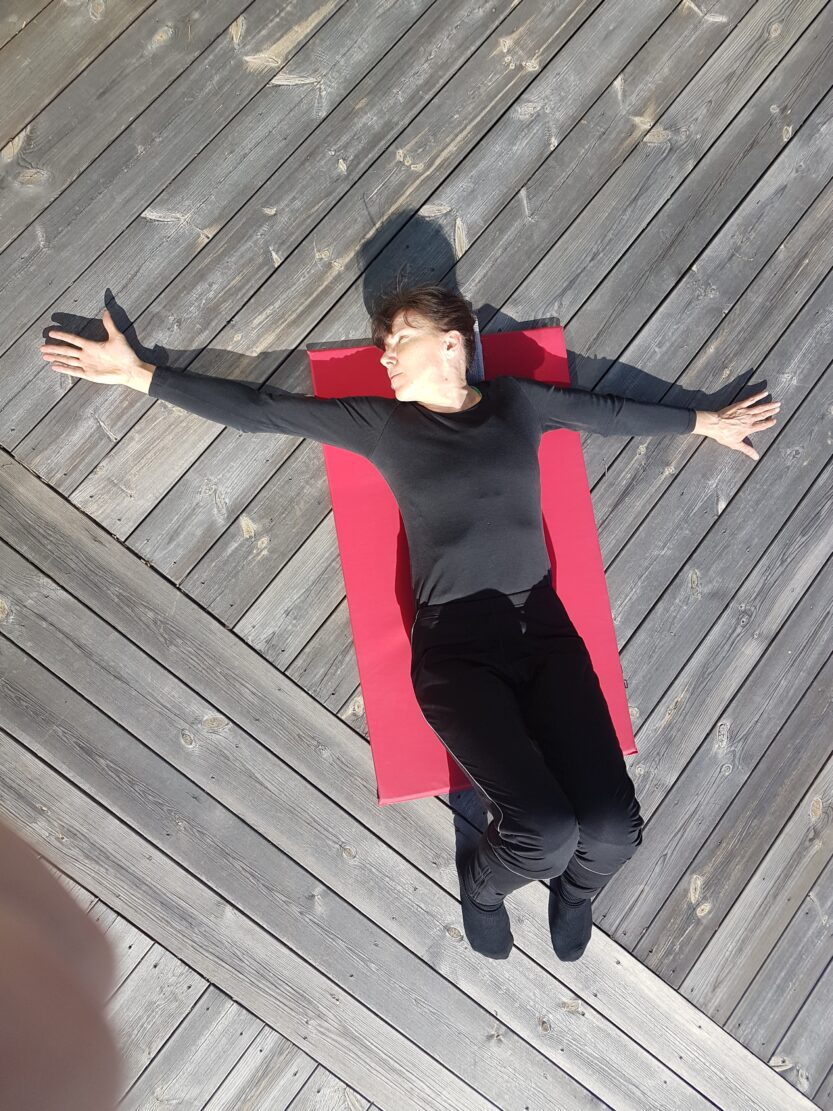


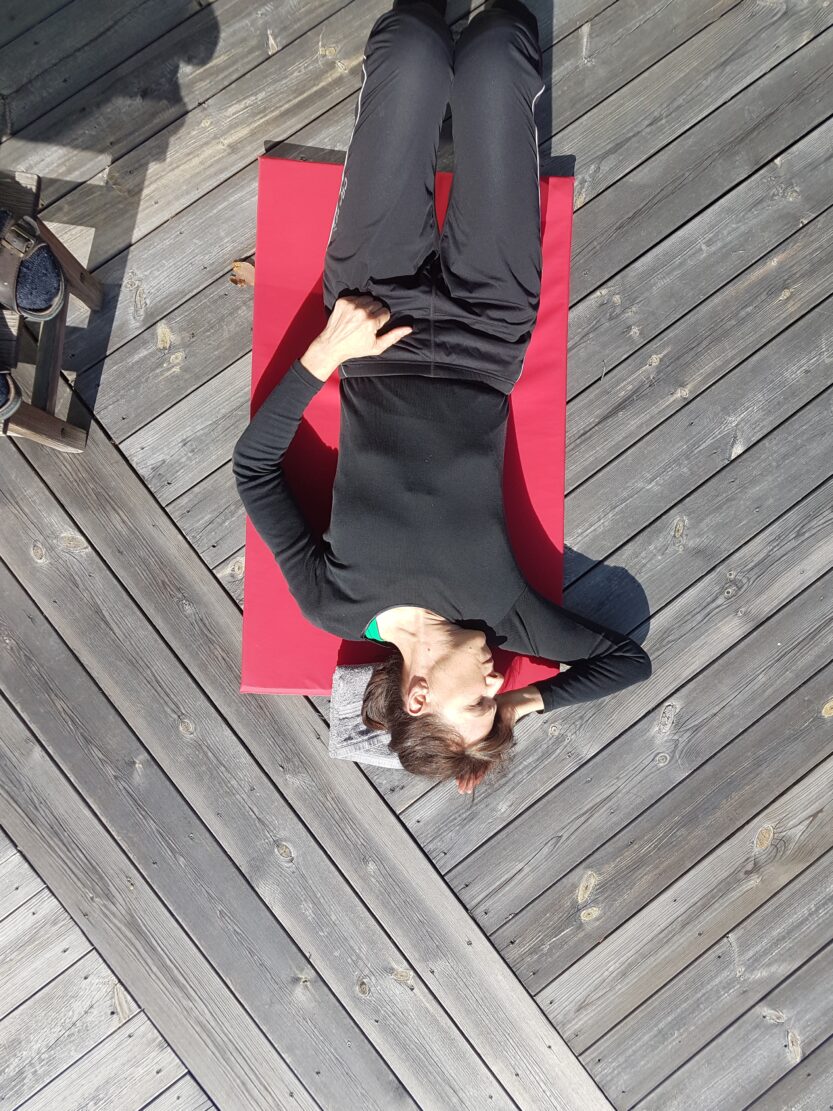

In a less acute stage, these execises can be done standing with the elbows bent so the weight of the arms is not a strain on the neck. Progress to straight arms when the neck is more stabile.
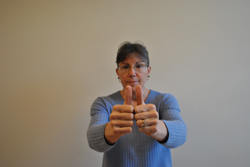
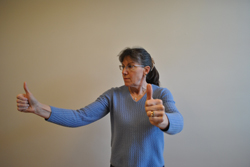
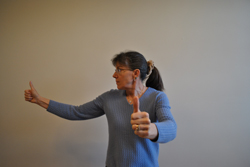
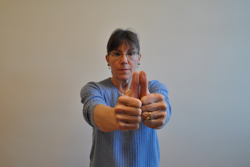
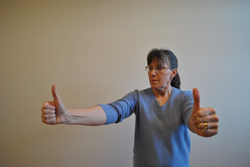
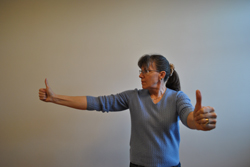
Train lateral flexion of the neck by looking down at the thumbs, turn head down to the side, follow with the eyes in an arc of motion from the hip, out to the side, up over the head. see pics below. Look up diagonally to the right, look down down diagonally to the right. Repeat on the left side. Use a star pattern with the thumb training vision in different fields, diagonally up to the right, up to the left, down to the right, down to the left, horizontally to right and left.
The next exercise is done lying on your back, chin tucked, arms stretched out to the sides. Twist the right arm so the palm is up and the left arm so the palm is down. Rotate your head to the right and fasten your vision on the right thumb. While you rotate the head to the left, twist the arms in the opposite position, Left palm up, right palm down, fasten vision quickly to the right thumb. Repeat 5 times on each side.
Stop and twist only the arms once, head is still looking left. Now continue the exercise turn the head to the right, twist arms, focus vision on the right pinkie finger, repeat 5 times on each side.